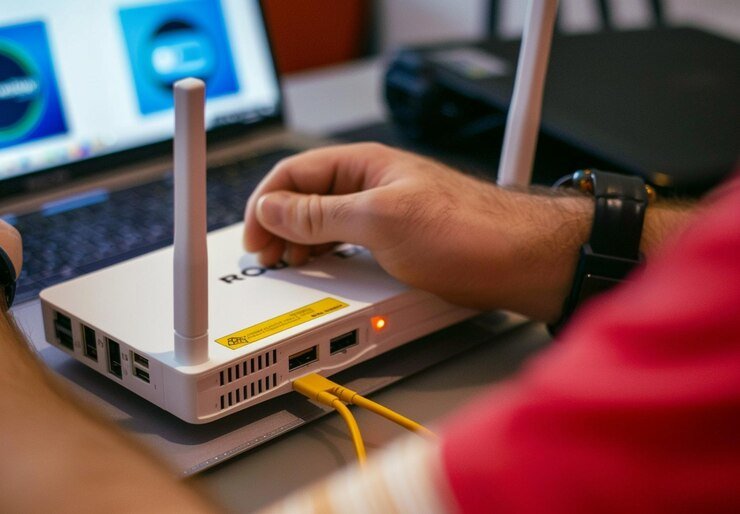
Introduction to IP Addresses
In the vast world of networking, understanding how devices communicate is crucial. At the heart of this communication lies something called an IP address. This unique identifier allows computers and other devices to send and receive data across networks seamlessly. However, not all IP addresses are created equal. They come in different classes, each designed for specific needs within various network environments.
As technology advances and our dependency on digital connections grows, recognizing the nuances of these ip address classes becomes essential for anyone working with or interested in networking. Whether you’re a seasoned IT professional or a curious newcomer, delving into the intricacies of IP address classification can enhance your grasp of how modern networks function efficiently. Buckle up as we explore the fascinating realm of IP addresses!
Understanding IP Address Classes
IP address classes play a crucial role in organizing how devices communicate over the internet. They categorize IP addresses into different groups based on their binary structure. This classification simplifies routing and enhances network efficiency.
There are five primary classes: A, B, C, D, and E. Each class serves distinct purposes and has specific characteristics. For instance, Class A is designed for large networks, while Class C caters to smaller ones.
The segmentation helps administrators allocate IPs effectively according to organizational needs. Understanding these classes ensures better management of IP resources across various networks.
As technology evolves, so does our understanding of these classifications. Adapting to changes fosters improved connectivity and optimizes traffic flow across the digital landscape.
Class A IP Addresses and Their Features
Class A IP addresses are designed for large networks, making them essential in expansive organizations. They start with a leading bit of 0, which allows for a vast range of network configurations.
These addresses can accommodate over 16 million hosts within a single network. This capability makes Class A ideal for multinational corporations and ISPs that require extensive subnetting options.
The first octet ranges from 1 to 126. This allocation means there’s plenty of room for growth as businesses expand their digital infrastructure.
Security is also enhanced due to the sheer scale; managing such large numbers often leads to sophisticated security measures being implemented.
However, they come with challenges as well. The complexity of routing and management increases significantly when dealing with such immense address spaces.
Class B IP Addresses and Their Features
Class B IP addresses are designed for medium to large networks. They play a crucial role in efficiently managing network resources.
These addresses range from 128.0.0.0 to 191.255.255.255, providing over 16 million unique hosts per network, which is quite substantial compared to Class A and Class C.
One of the standout features of Class B is its default subnet mask of 255.255.0.0, allowing organizations more flexibility in dividing their address space into subnets as needed.
This class balances scalability with manageability, making it suitable for universities and corporations that require numerous devices but do not need the vast ranges offered by Class A.
Moreover, because they accommodate both larger organizations and those with moderate growth expectations, many choose them for expanding infrastructures without switching classes too frequently.
Class C IP Addresses and Their Features
Class C IP addresses are designed for smaller networks, making them ideal for businesses and organizations with limited needs. These addresses range from 192.0.0.0 to 223.255.255.255.
A standout feature of Class C is the ability to host up to 254 devices on a single network segment. This makes it suitable for small offices or home networks where a few computers need connectivity.
The subnet mask associated with Class C is typically 255.255.255.0, allowing straightforward configuration and management of subnets within the network.
Moreover, Class C IPs often provide greater security through simpler routing since they’re less likely to be targeted compared to larger address classes like A or B.
As internet usage grows, understanding these features becomes essential in efficiently managing resources while ensuring reliable communication among connected devices.
The Future of IP Addressing with IPv6
The transition to IPv6 represents a significant leap forward in internet technology. As the world becomes increasingly connected, the limitations of IPv4 are becoming more apparent. With only about 4 billion unique addresses under its current system, it’s nearing capacity.
IPv6 offers an astounding number of IP addresses—about 340 undecillion options. This vast pool ensures that every device can have its own unique identifier, accommodating the explosion of IoT devices and smart technologies.
Beyond sheer quantity, IPv6 introduces enhanced features like simplified address configuration and improved security protocols. These advancements promise to streamline network management while bolstering data privacy.
As we gradually shift towards this new protocol, organizations must adapt their infrastructure. Embracing IPv6 is not just a necessity; it’s essential for future-proofing networks against growing digital demands. The next era of connectivity hinges on how seamlessly we integrate these changes into our everyday lives.
Classful vs Classless IP Addressing
Classful IP addressing was the original method, dividing networks into fixed sizes based on predefined classes. You had Class A, B, and C addresses that established specific ranges for different scales of organizations. This rigidity often led to inefficiencies; small companies could waste large blocks of addresses they didn’t need.
In contrast, classless IP addressing emerged as a flexible solution. It allows for variable-length subnet masking (VLSM), letting network administrators allocate addresses more efficiently according to actual needs. This adaptability helps manage the limited IPv4 address space better.
While classful systems are easier to understand at first glance, classless methods offer greater scalability and improved resource utilization. As networks grow increasingly complex, understanding these differences becomes crucial for effective management and planning in today’s digital landscape.
The Importance of IP Address Classes in Networking
IP address classes play a crucial role in the structure of networking. They help organize how devices communicate within a network, making data transmission more efficient.
Each class serves different purposes depending on the size and scope of networks. For example, Class A is ideal for large organizations with extensive needs, while Class C suits smaller networks or personal use.
Understanding these classifications aids network administrators in managing IP addresses effectively. It ensures optimal allocation without wasting valuable resources.
Moreover, categorizing IP addresses helps streamline routing processes. Routers can make faster decisions based on the class type, which enhances overall network performance.
As technology evolves, the importance of these classes remains evident in maintaining order within vast digital landscapes. Proper management leads to better security and easier troubleshooting when issues arise.
Advantages and Disadvantages of Classful and Classless IP Addressing
Classful IP addressing simplifies network management. It offers a clear structure, making it easy to identify the range of addresses within each class. This predictability helps in routing and administration.
However, this rigidity can also be a drawback. Classful systems often result in wasted IP space. Organizations may find themselves with more addresses than they need or not enough for their growing networks.
On the other hand, classless IP addressing provides flexibility and efficient utilization of available addresses. CIDR (Classless Inter-Domain Routing) allows for variable-length subnet masking, accommodating diverse network sizes without waste.
Yet, this complexity might intimidate some administrators unfamiliar with its intricacies. Managing these networks requires advanced skills and knowledge that not all teams possess.
Balancing between flexibility and simplicity is crucial when choosing an addressing method tailored to specific networking needs.
How to Identify the Class of an IP Address
Identifying the class of an IP address is straightforward. Start by examining the first octet, which ranges from 0 to 255.
If it falls between 1 and 126, it’s a Class A address. This class supports large networks with many hosts. Next up, if the first octet is between 128 and 191, you’re looking at a Class B address. This one accommodates medium-sized networks.
For smaller networks, check if the first octet lands in the range of 192 to 223—this designates a Class C address.
Class D addresses start from 224 and go to 239; these are reserved for multicast groups. Any IP starting with numbers beyond that belongs to Class E, primarily used for experimental purposes.
A quick glance at just one number can tell you everything about its classification!
Conclusion
Understanding IP address classes is essential for effective networking. These classifications help network administrators allocate resources efficiently and manage their networks better. Different classes serve varying purposes, catering to the needs of small businesses and large organizations alike.
As we transition toward IPv6, adapting our understanding of these classes remains crucial. The shift emphasizes flexibility in addressing but doesn’t eliminate the relevance of traditional IP address class knowledge. Moreover, recognizing the differences between classful and classless addressing opens up a broader perspective on how networks can be organized.
Knowing how to identify an IP address’s class allows for smoother network operations and troubleshooting. Whether you’re managing a home network or a vast corporate environment, grasping these concepts can lead to improved performance and reliability.
Embracing both historical context and modern advancements prepares us for future innovations in networking technology. It’s clear that mastering IP address classes will continue to play an important role as we navigate through evolving digital landscapes.
RELATED POSTS
View all


